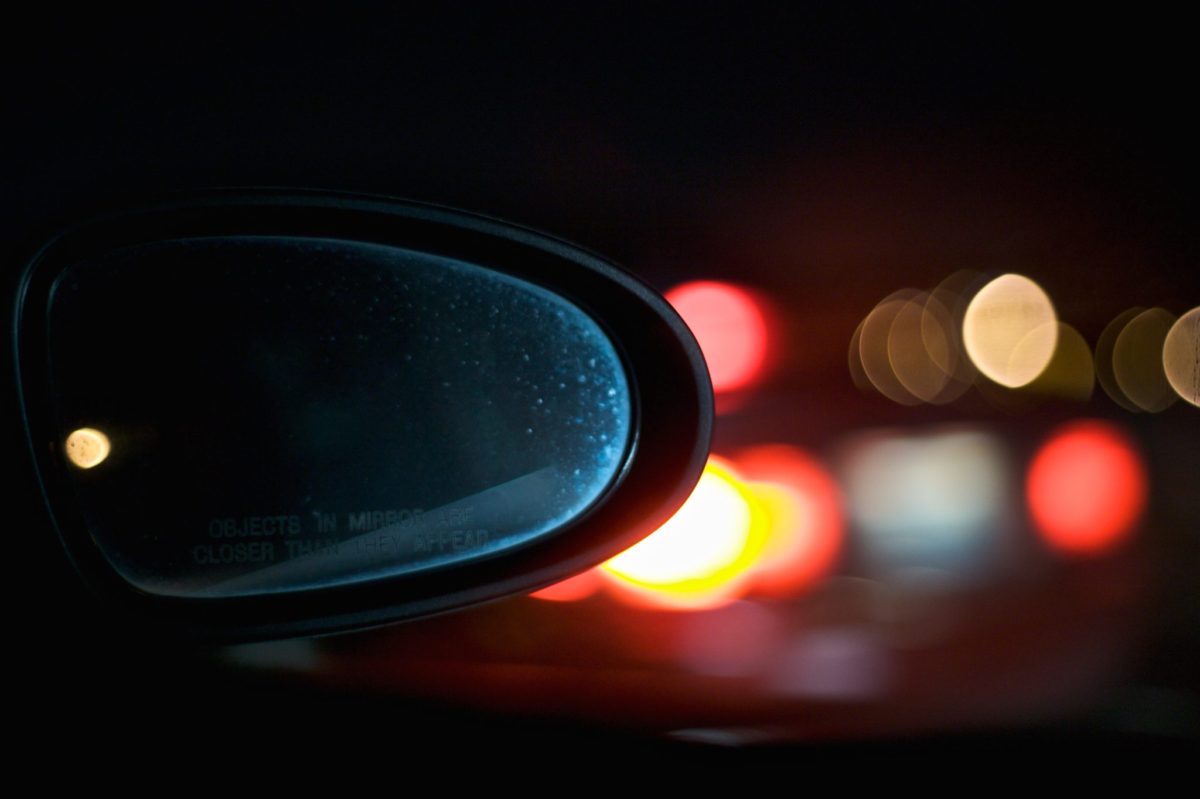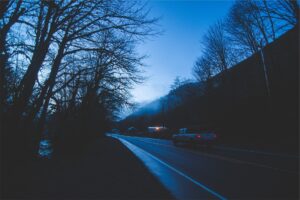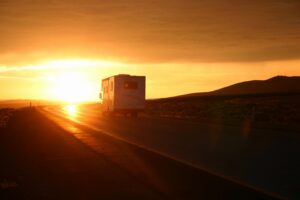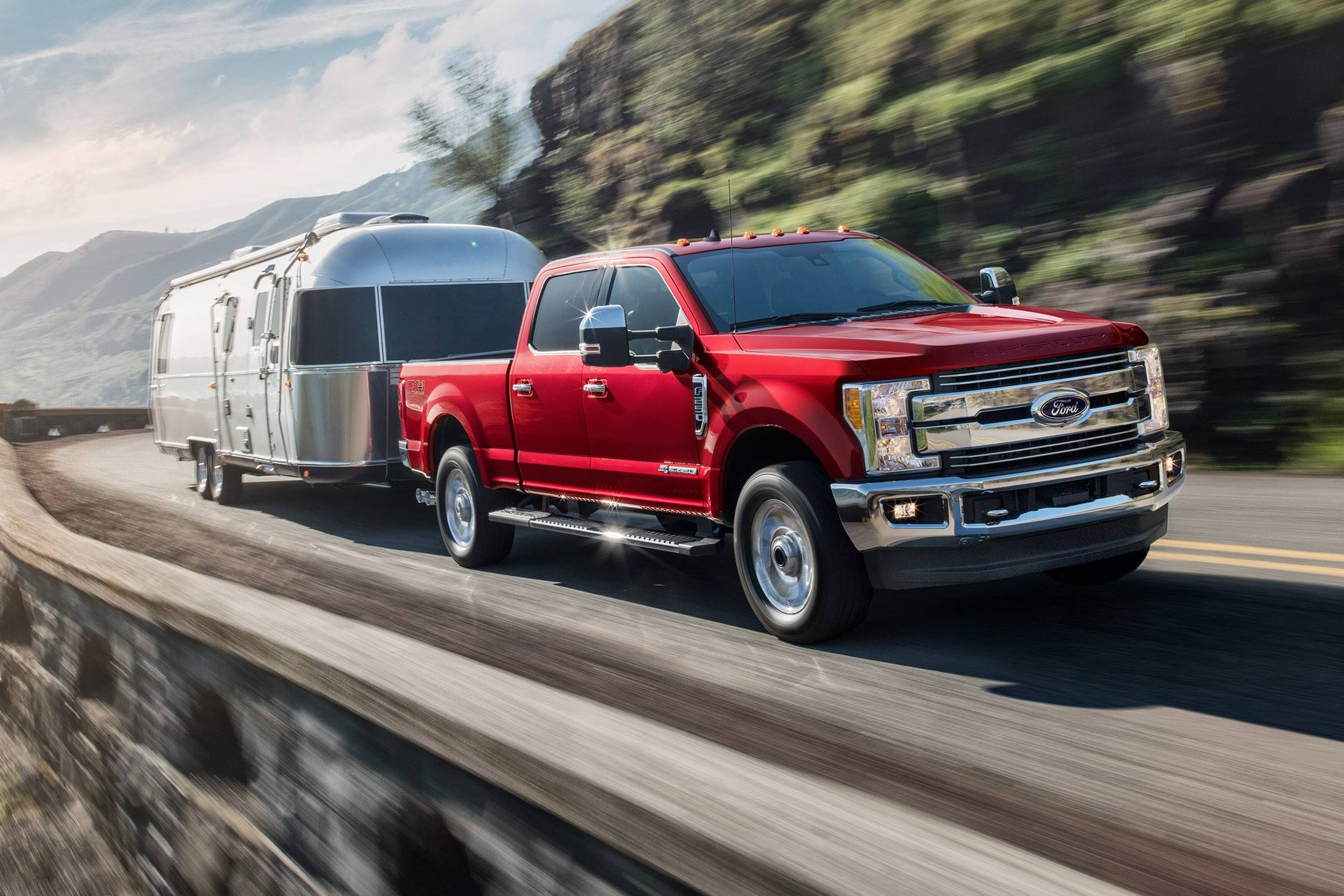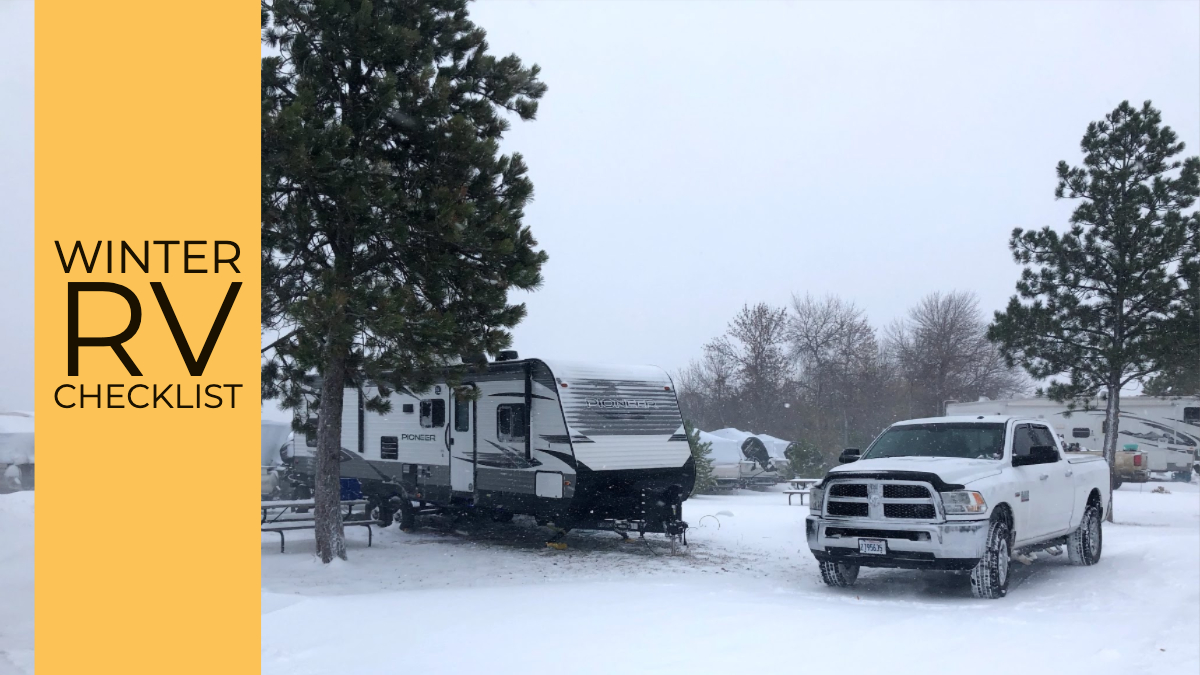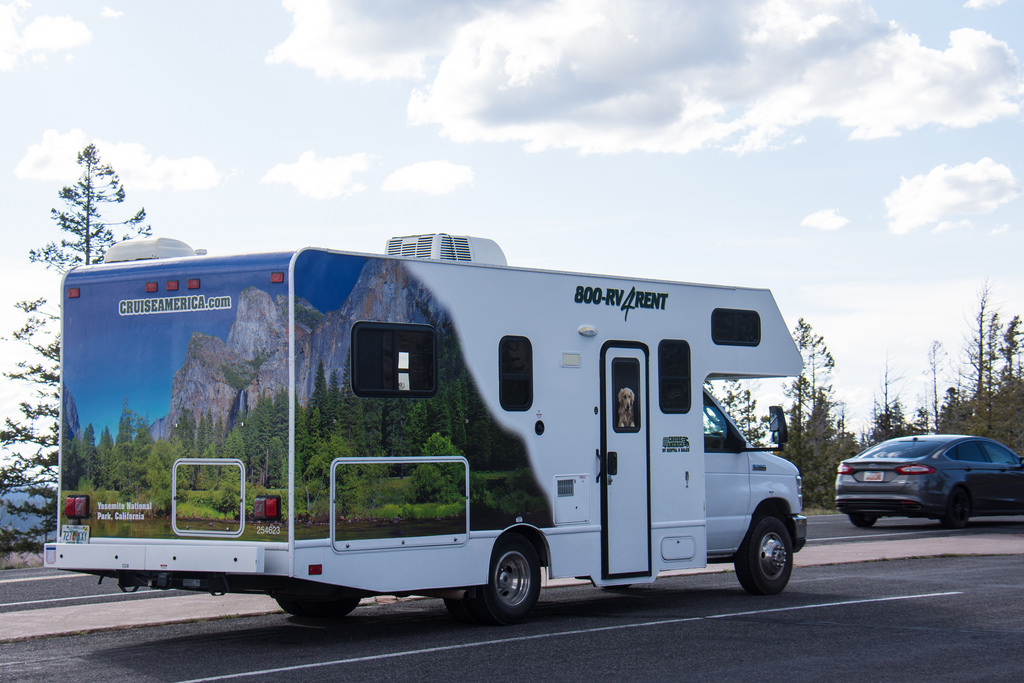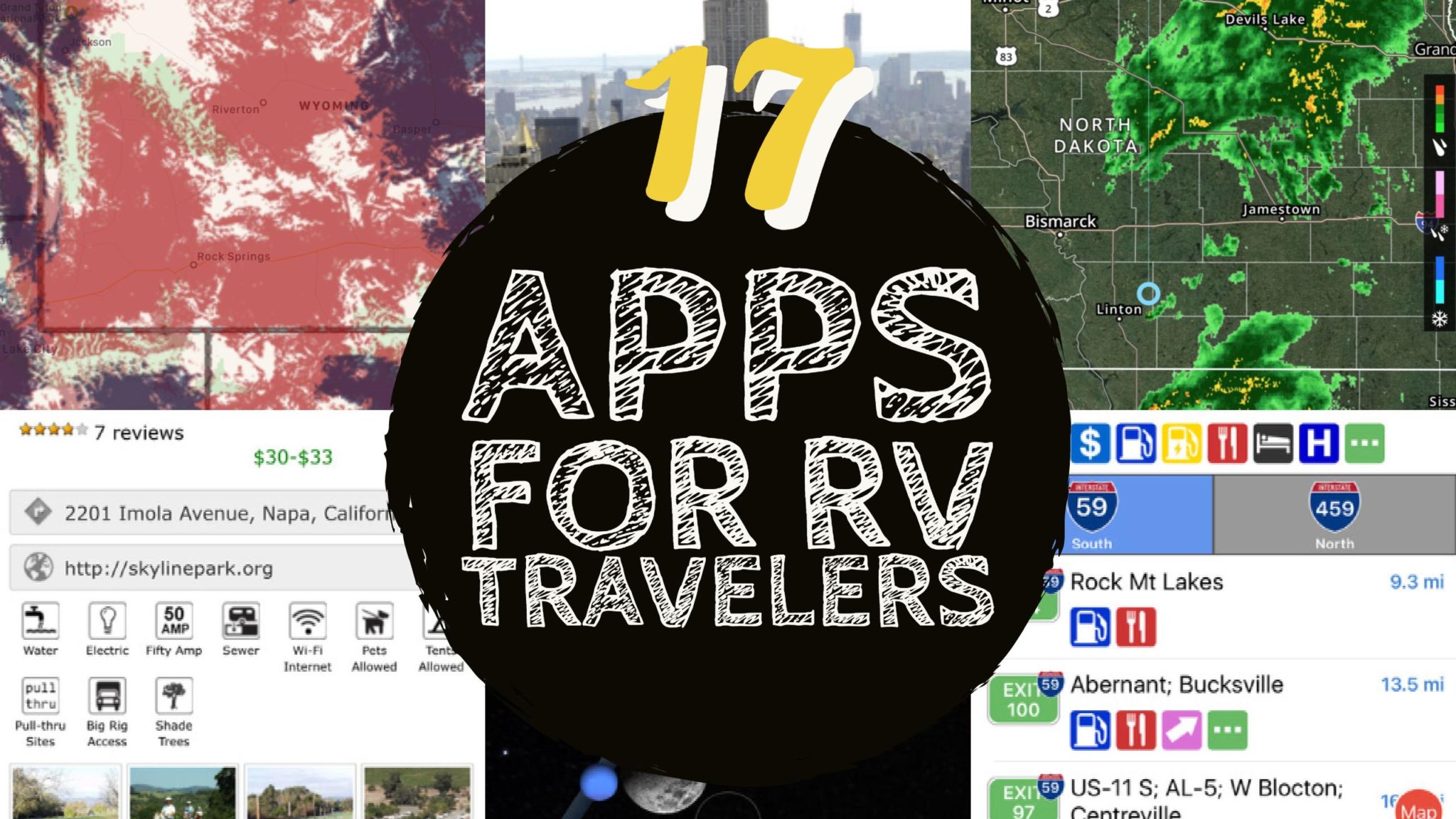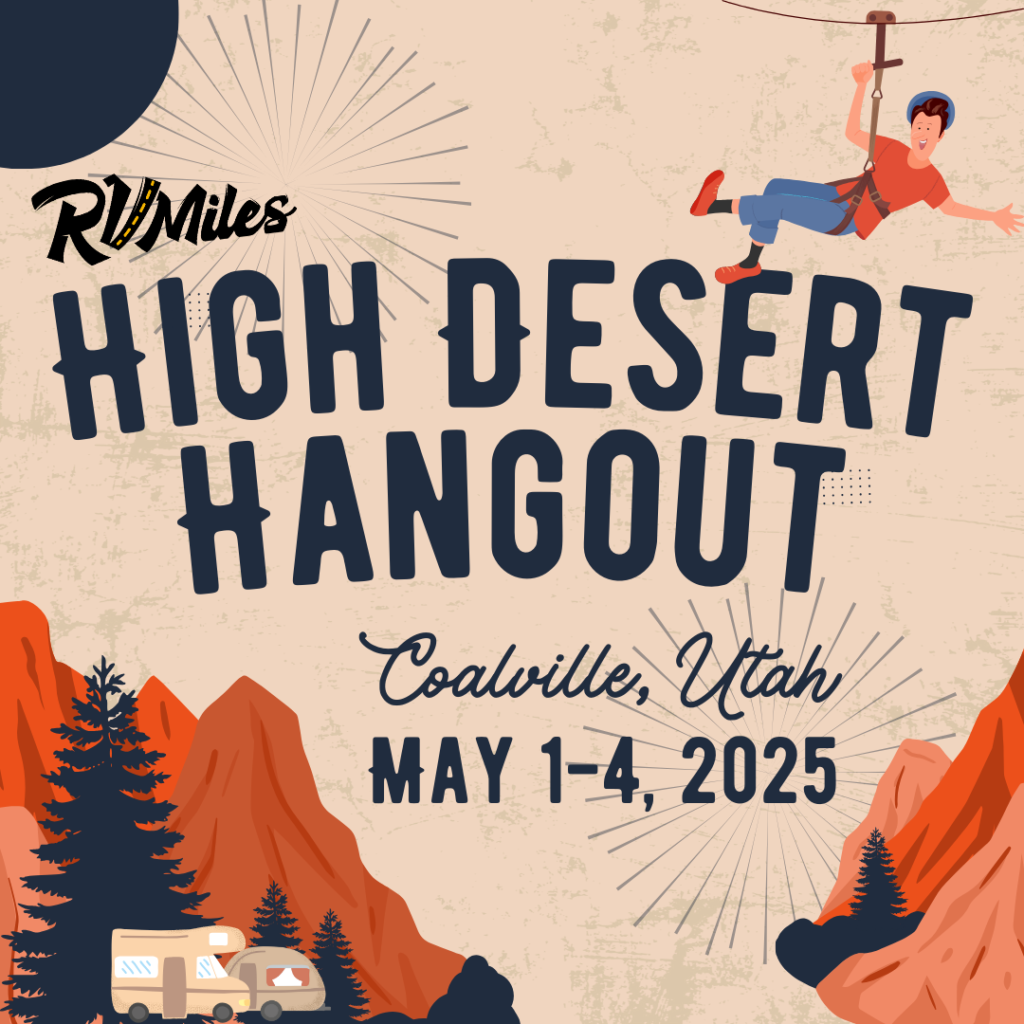Driving any vehicle at night comes with some increased risks. The lack of color makes it more difficult to differentiate obstacles such as a curb or a pothole from the road. A reduction in your depth perception coupled with the short distance you can see ahead of you makes it even harder to avoid hazards. Some drivers, especially older ones, may have a reduced light sensitivity in their eyes.
Driving a big RV at night – especially on long-distance trips – only increases those dangers. But night trips have their benefits, too. Fewer vehicles on the road make for less stressful driving and a quicker journey. Sometimes night-time driving just can’t be avoided. In this article, we’ll list some tips and tricks for arriving safely at your destination when driving at night.
Nighttime Driving Tips
- Keep things clean. You’d be amazed at how much a dirty windshield or dirty headlights reduces visibility. Keep your lights, mirrors, and windows very clean. Hazy plastic headlight covers greatly reduce light output and should be polished or replaced.
- Slow down. Safety on the road can be measured in stopping distance. The closer a hazard has to be for you to see it, the less time you have to stop. If you slow down from 65 mph to 60 mph, you decrease your stopping distance by over 50 feet.
- Aim your headlights. Headlights are adjustable so that they hit the road in the proper place. Check out this tutorial to aim your own headlights for optimum visibility. Trucks that are loaded down in the back (especially with the weight a big trailer) will ride at a different angle than an unloaded truck, so the headlights may be aimed too high. Check your aim with the trailer hitched up and your fuel tank full.
- Drive with your high beams on to see further, but only when there is no oncoming traffic.
- Use your fog lights. If your tow vehicle or RV is equipped with fog lights, use them. They are low and wide, lighting a large swath of the road even when it isn’t foggy.
- Dim your instrument panel. The reason your instrument panel has a dimmer is so that you can adjust the lights down at night. If the dash is too bright, your retinas will have to adjust as they move back and forth from the display to the road. Especially make sure GPS screens are in night-mode.
- Stay awake. Even if you aren’t driving in the hours when you are normally sleeping, driving at night can make you very tired. There isn’t much interesting to look at in the dark, and the white lane lines can lull you to sleep. To stay alert, do not use cruise control, as it can make you too comfortable. Tilt your seat more upright than normal, and move a little forward, so that your left leg is bent in action on the gas pedal, instead of relaxed and straight. Keep the temperature cooler than normal, with plenty of air circulation. Talk to your co-pilot or sing along with the radio. Stop frequently to stretch your legs and have a snack for energy. If you feel like dozing off, STOP immediately and get some rest.
- Watch for deer and other animals. If you see an animal on the road, don’t swerve to avoid it. You may inadvertently hit another car, a guardrail, or run off the road. Instead, brake to a controlled stop.
Arriving at the campground at night
Pulling into a campground at night brings its own set of challenges. These tips will help you get into your space quickly in the dark without breaking anything.
- Make sure the park will be open. Many parks close the gates or do not take arrivals after a certain time, some as early as 8 pm. Make sure to check with the park, and have their phone number handy in case you will be arriving later than expected. Allow plenty of extra time for construction, traffic, GPS errors, etc.
- Book a pull-thru. Try to find a campground that has pull-thru sites on days you will arrive late. No backing up gets you in and out in a breeze, especially if you are just there for a night.
- Check out the space before backing in. The driver should get out of the RV and walk around the site noting obstacles that they may not be able to see backing up. Make sure to look up for branches, and look across the road for obstacles the front end might hit.
- Have multiple high-powered flashlights with fresh batteries. Often you’ll need the assistance of a flashlight to find your site number, so have it with you up front. When backing into a campsite, your co-pilot’s main job is to light up any obstacles that you might hit, and yell stop (or better yet signal “stop” with the flashlight) when you are about to hit something. If you don’t have a co-pilot, see if someone at the campground can help if there are people out and about. If there is no help available, set up flashlights on the ground to illuminate obstacles before backing.
- Avoid angering your new neighbors. Don’t set up your campsite after quiet hours. Do the minimum needed to get hooked up and off to bed. If you don’t plan on using the water or sewer connection that night, it can wait until the morning, too.
Do you have a nighttime driving tip that we missed? Leave it in the comments below and let us know your thoughts.
Want to keep up with more RV basics? Join the RV Miles mailing list!

